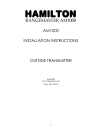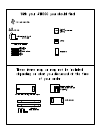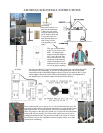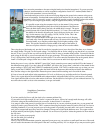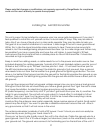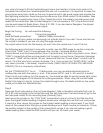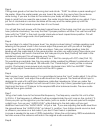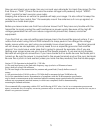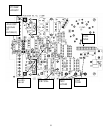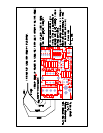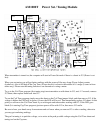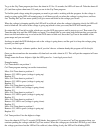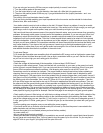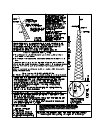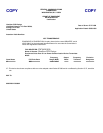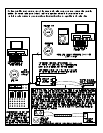5
Now go and check your range. Use your car and your odometer to check the range. Do the
final tune on “TUNE” (Check to be sure the meter voltage is still peaked). Adjust “AUDIO
LEVEL” control for best sound on your radio.
Keeping the antenna as vertical as possible will help your range. It is also critical to keep the
antenna away from metal. Don’t for example, mount the antenna so it runs up against, or
parallel to a metal drain pipe.
Before you leave make sure that the customer knows that if they have any trouble with the
transmitter to simply unplug the wall transformer or power supply. Because of the high RF
voltage generated the unit can induce a signal into phone lines, stereos, and other
equipment.
If you find that you are not getting good range check the transmitter ground system, if you
notice that when tuning the unit that instead of a sharp peak in the voltage the voltage
barely moves while you are tuning you probably have a bad ground. Electrical grounds
will not always be acceptable, you may need to run a separate ground or find another
ground. You could use a water pipe that is going to ground for example. Also if you are
getting poor range make sure you have set the power properly. If you are having troubles
recheck all wiring and connections. If you have carrier but no audio be sure the audio pot is
turned up. Be sure the power is connected to the power terminals and not the sync terminals.
Be sure the crystal is in and seated (unless you have the freq module). See the trouble page.
Section 15.219 Operation in the band 510 - 1705 kHz.
(a) The total input power to the final radio frequency stage (exclusive of filament or heater
power) shall not exceed 100 milliwatts.
(b) The total length of the transmission line, antenna and ground lead (if used) shall not exceed 3
meters.
(c) All emissions below 510 kHz or above 1705 kHz shall be attenuated at least 20 dB below the
level of the unmodulated carrier. Determination of compliance with the 20 dB attenuation specification
may be based on measurements at the intentional radiator's antenna output terminal unless the intentional
radiator uses a permanently attached antenna, in which case compliance shall be demonstrated by
measuring the radiated emissions.
We recommend fully cooperating with the FCC and following all FCC rules.
The FCC is an independent governmental
agency, answerable only to congress, we cannot guarantee and/or we cannot be held responsible for what the FCC may do or
decide in any particular situation.



